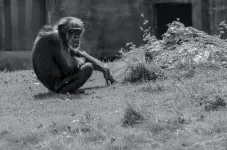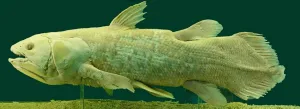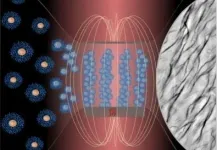(Press-News.org) During a study with captive vampire bats at the Smithsonian Tropical Research Institute (STRI) in Panama, a young vampire bat pup was adopted by an unrelated female after its mother died. Although this observation was not the first report of adoption in vampire bats, it is uniquely contextualized by more than 100 days of surveillance-camera footage. This footage captured by STRI research associate Gerry Carter's lab at Ohio State University reveals intimate details about the changing social relationships between the mother, the pup and the adoptive mother throughout their time in captivity.
"The adoption took place after a very sad but ultimately serendipitous occurrence," said Imran Razik, then short-term fellow at STRI and doctoral student at the Ohio State University. "We realized after the mother died and the other female stepped in to adopt the baby, that we had recorded the entire social history of these two adult female bats who met for the first time in captivity. The strong relationship they formed based on grooming and sharing food with each other may have motivated this adoption."
To learn more about how vampire bats form social bonds, researchers in Carter's lab captured vampire bats from three sites across Panama. These sites were all very distant from one another, such that bats from different sites were unrelated and had never met before. Their new home, a cage shrouded in black mesh fabric, was fitted with three infrared surveillance cameras that each recorded about six hours of footage every day for four months.
Based on the footage, bats that were initially strangers began to form new social bonds, which are best defined by grooming and food-sharing interactions. Grooming other individuals is somewhat common, whereas food sharing is less common, especially among strangers.
Vampire bats must eat often to survive--typically every night. If a bat is unable to find a blood meal, it may receive regurgitated blood from a close social partner.
"To some extent, we were trying to see if we could influence partner choice between bats by manipulating if and when they could share food," Razik said. "We wanted to see how these grooming and food-sharing relationships were forming, so we kept track of all grooming and food-sharing interactions on the video recordings."
When the mother bat, Lilith, unexpectedly died and her 19-day-old pup was adopted by another female, BD, the research team continued their observations.
"Shortly before Lilith died, I noticed that the pup would occasionally climb onto BD, and I suppose this may have initiated a cascade of neuroendocrine mechanisms that caused BD to start lactating," Razik said. BD was not pregnant and did not have a pup of her own, but Razik found that she was lactating on the day Lilith died. After Lilith's death, in addition to nursing, BD appeared to groom and share food with the pup more than any other female in the colony.
A German researcher in the 1970s observed vampire bat adoptions several times in his captive colony, so this finding was not new. However, before leaving Panama, Razik gave a tour of the vampire bat project to one of STRI's emerita senior scientists, Mary Jane West-Eberhard, and she mentioned that it would be interesting to follow up on the relationships between the mother, the pup and the adopter. Carter and Rachel Page, STRI staff scientist and head of the Batlab in Gamboa, Panama, agreed that it was worth taking a closer look at the relationships between these bats.
When Razik reviewed the videos after the experiment was finished, not only did it turn out that BD and Lilith had been primary grooming partners, but BD was also Lilith's top food donor. However, Lilith did not appear to share food with BD. Moreover, the data confirmed Razik's initial impression--BD helped the pup at rates much higher than any other female.
"Another intriguing discovery was that BD and another bat, called BSCS, both of which had been in captivity before, were the two bats who groomed the pup the most," Razik said. "Now we're wondering if somehow the experience of being in captivity motivates individuals to invest in other bats at higher rates or adopt orphaned pups in critical need."
"Compared to other bats, vampires make extraordinary investments in their offspring," Page said. "And we still don't know if, or how often, adoption may happen in the wild. But this was an amazing chance to better understand what kind of relationships might result in an adoption."
"Studying adoption might give us insight into what immediate factors in the brain or environment affect parental-care decisions," Carter said. "As a new parent myself, I have come to realize the utter power of baby cuteness! I feel that my brain has been completely rewired. Most of us can understand the strong desire to adopt and care for a cute puppy or kitten, or to take on the ultimate responsibility of adopting a child. Regardless of why these traits exist, it is inherently fascinating to consider the neuroendocrine mechanisms that underlie them, the stimuli that trigger them, how they differ across species or individuals and how these traits might even be pre-adaptations for other forms of cooperation."
INFORMATION:
This work was published in Royal Society Open Science.
Adopting policies that are consistent with achieving the Paris Agreement and prioritise health, could save 6.4 million lives due to better diet, 1.6 million lives due to cleaner air, and 2.1 million lives due to increased exercise, per year, across nine countries.
New research from The Lancet Countdown on Health and Climate Change published in a special issue of The Lancet Planetary Health journal highlights the benefits to health if countries adopt climate plans - Nationally Determined Contributions (NDCs) - that are consistent with the Paris Agreement aim of limiting warming to "well below 2°C". [1,2]
The countries considered in the study represent ...
The notion of social distancing rose to public prominence approximately a year ago, when health officials began recommending it as a way to slow the spread of the novel SARS-CoV-2 virus. Despite the novelty of the concept among many contemporary human audiences, social distancing has considerable precedent among animals.
Writing in BioScience, Mark Butler of Florida International University and Donald C. Behringer of the University of Florida outline the role of social distancing in nature and compare it with its human counterpart. They describe numerous animals in which distancing has evolved, including guppies, chimpanzees, birds, ants, and mice, among many others. ...
The capture of the first living Coelacanth, a mighty ocean predator, off the coast of South Africa caused quite a stir in 1938, 65 million years after its supposed extinction. It became known as a "living fossil" owing to its anatomy looking almost identical to the fossil record. But while the Coelacanth's body may have changed little, its genome tells another story.
Toronto scientists have now revealed that the African Coelacanth, Latimeria chalumnae, gained 62 new genes through encounters with other species 10 million years ago. Their findings are reported in the journal Molecular Biology ...
Headlines like "Black Friday Shoppers Trampled in New York" and popular television shows such as "Extreme Couponing" remind us how crazy consumers can get about retail sales promotions. This enthusiasm for getting bargains has been termed "deal proneness."
Past research has indicated that, to some degree, people become deal prone through being taught by their parents. But a new paper, "Born to Shop? A Genetic Component of Deal Proneness," published in the Journal of the Association for Consumer Research, provides evidence that our genes also play a role in causing bargain-hunting enthusiasm.
To demonstrate this genetic factor, authors Robert Schindler, Vishal Lala, and Jeanette Taylor ...
Washington, DC-- New research led by Carnegie's Yingwei Fei provides a framework for understanding the interiors of super-Earths--rocky exoplanets between 1.5 and 2 times the size of our home planet--which is a prerequisite to assess their potential for habitability. Planets of this size are among the most abundant in exoplanetary systems. The paper is published in Nature Communications.
"Although observations of an exoplanet's atmospheric composition will be the first way to search for signatures of life beyond Earth, many aspects of a planet's surface habitability are influenced by what's happening beneath the planet's surface, and that's where ...
Nutritionists have been touting the health benefits of seafood for years. Dietary guidelines recommend that the average adult get at least two servings of seafood per week. But the push to increase our consumption of seafood can put a strain on the seafood industry and create more waste.
"Many fisheries are fully or overexploited," said Lekelia "Kiki" Jenkins, an associate professor at Arizona State University's School for the Future of Innovation in Society in the College of Global Futures. "We are pushing our fisheries to the brink that they can sustain. Meanwhile, consumers are wasting nearly half of the fish they buy. We need to understand our waste behaviors and put a mechanism into place so that we use what we catch."
Jenkins is researching ways to improve sustainability in ...
Announcing a new article publication for BIO Integration journal. In this review article the authors Yue Li, Zhiyi Chen and Shuping Ge from First Affiliated Hospital of University of South China, Hengyang, China and Tower Health and Drexel University, Philadelphia, PA, USA summarize current state of the art applications of microbubble-cell interactions and sonoporation effects to cellular functions.
Ultrasound combined with microbubble-mediated sonoporation has been applied to enhance drug or gene intracellular delivery. Sonoporation leads to the formation of openings in the cell membrane, triggered by ultrasound-mediated oscillations and destruction of microbubbles. Multiple mechanisms are involved in the occurrence ...
Announcing a new article publication for BIO Integration journal. In this review article the authors Xiuling Li, Shunung Liang, Chee Hwee Tan, Shuwen Cao, Xiaoding Xu, Phei Er Saw and Wei Tao from Sun Yat-sen University, Guangzhou, China, Guangzhou University of Chinese Medicine, Guangzhou, China and Center for Harvard Medical School, Boston, MA, USA discuss the potential benefits of four plants endogenous to China and the enhancement of their therapeutic efficacy by nanotechnology intervention.
Plant derived natural products have been used for the treatment of various human diseases long before the intervention of modern medicine. The basis of modern medicine is still inspired by traditional medicine and therapies. However, ...
LA JOLLA, CA--As new COVID-19 variants begin to throw vaccine efficacy in question, two leading scientists are calling for health agencies to invest in the development of vaccines that would be broadly effective against many different variants and strains of potential pandemic viruses.
In a END ...
Researchers at the University of Campinas's Chemistry Institute (IQ-UNICAMP) in the state of São Paulo, Brazil, have developed a template-free technique to fabricate cilia of different sizes that mimic biological functions and have multiple applications, from directing fluids in microchannels to loading material into a cell, for example. The highly flexible cilia are based on polymer-coated iron oxide nanoparticles, and their motion can be controlled by a magnet.
In nature, cilia are microscopic hairlike structures found in large numbers on the surface of certain cells, causing currents ...



